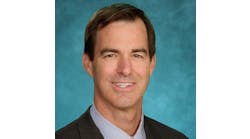Geneia recently conducted a nationwide survey of more than 400 practicing physicians to better understand the depth of physician dissatisfaction, as well as the causes and potential solutions. The results are nothing short of alarming:
- Overall, the nationwide Physician Misery Index is 3.7 out of 5, indicating that scales are tipping from satisfaction to misery.
- Eighty-four percent of physicians believe quality patient time may be a thing of the past.
- Sixy-seven percent of those surveyed know a physician who is likely to stop practicing medicine in the next five years as the result of burnout.• A majority of doctors (51 percent) admit that they too have considered career options outside of clinical practice, and that number is even higher (62 percent) for physicians who have been practicing medicine for less than 10 years.
- Seventy-eight percent of doctors say they frequently feel rushed when seeing patients.
- An overwhelming majority (87 percent) say that the business and regulation of healthcare has changed the practice of medicine for the worse.
Physicians were also asked an open-ended question about what prevents them from experiencing the joy of medicine. In many ways, their comments were even more distressing than the numbers. The most often cited obstacle was the business of medicine and the resulting record keeping and patient quotas.
One physician commented, “The joy is interaction with people. The greatest detractor from this is the record keeping and quality data inputs that have mushroomed with EHR.” Another wrote, “Joy of medicine is spending time with patient and family in treating the patient. The biggest obstacle is that doctors are being asked to do more and more menial and clerical work that takes away this time.” These kind of comments were echoed by hundreds of physicians.
As worrying as these physician comments are, they also point to possible remedies: the potential for technology to streamline or eliminate administrative work, improve and automate data sharing, and subsequently create more time for meaningful patient interactions.
It is encouraging to learn that physicians do believe technology can help. In addition to the topline findings about satisfaction, the survey probed further into physician beliefs about data and analytics. The survey showed that a majority believe data and analytics tools can improve their ability to efficiently assess patient history and needs, and help them get value and improved outcomes from chart documentation. Where data and analytics seem to fall short is in reducing the time physicians spend on record keeping. Yet, that’s the thing they most want technology to fix.
That’s the glimmer of hope in the survey. Physicians want technology to help them with the biggest road block to feeling the joy of medicine: the administrative and clerical work associated with recordkeeping.
The health IT industry isn’t quite there yet, but there are solutions that are quickly reaching their full potential. Digital health in the form of Bluetooth and Wi-Fi-enabled, FDA-approved devices offers automated uploading of physiologic and biometric data into the clinical record. The proliferation of these devices would allow physicians to have meaningful conversations with patients during visits, instead of spending time keying in data. Similarly, remote patient monitoring devices automatically monitor and transmit data such as blood pressure, weight, blood glucose, blood oxygen saturation and heart rate. Clinical algorithms can then be applied to the data to refine the alerts sent to the clinical team. These alerts can be monitored by the nursing staff, and consequently the burden on physicians is reduced and patient outcomes are improved.
Care collaboration tools let care team members other than the physician identify, monitor, manage, and engage the population and individual patients appropriately according to their risk and longitudinal care plan. Sophisticated solutions can tailor the information shown to the role of the care team member. Effective use of these tools facilitates better preparation in advance of a patient visit and management across transitions of care, allowing physicians to be the quarterback of the team instead of filling every role of the team, freeing them up to fully engage with a patient during a visit.
Telemedicine is yet another tool to connect patients to the physician in rural environments or where travel or health is an issue, eliminating barriers and improving health outcomes. Telemedicine also allows physicians who want to expand their geographic scope or work alternative hours to do so without increasing administrative overhead.
As Dr. Carrie Mendoza noted, “Now, you must do documentation a certain way, and perhaps redo it, because of compliance with regulations or the need for billers and coders.” Natural language processing helps address this common pain point for physicians because it allows information to be easily entered into and automatically extracted out of the EHR for record keeping, outcome reporting and data sharing.
At the frontiers of data analysis are not only more sophisticated clinical algorithms, but also closed-loop systems that learn from prior evidence and predictions to improve the predictive value of the analytic systems. Machine learning translates into more accurate hit rates when identifying at-risk patients and less noise when it comes to alerts and alarms that sound for physicians, which is especially important with an increase in the application of digital health.
Apart from technologies already on the horizon, there is even greater potential to remedy dissatisfaction simply by calling upon physicians to take back control over the practice of medicine, and be the leaders, designers and innovators of solutions. The American Medical Association (AMA) has recognized this and forged a direct partnership with a Chicago healthcare incubator to build the AMA Interaction Studio. The studio will provide the physical and virtual infrastructure to enable physicians and entrepreneurs to collaborate on the development of new technologies, services and products in a simulated healthcare environment.
These are but a few of the ways to counter the rising tide of dissatisfaction and restore joy to the profession of medicine.



